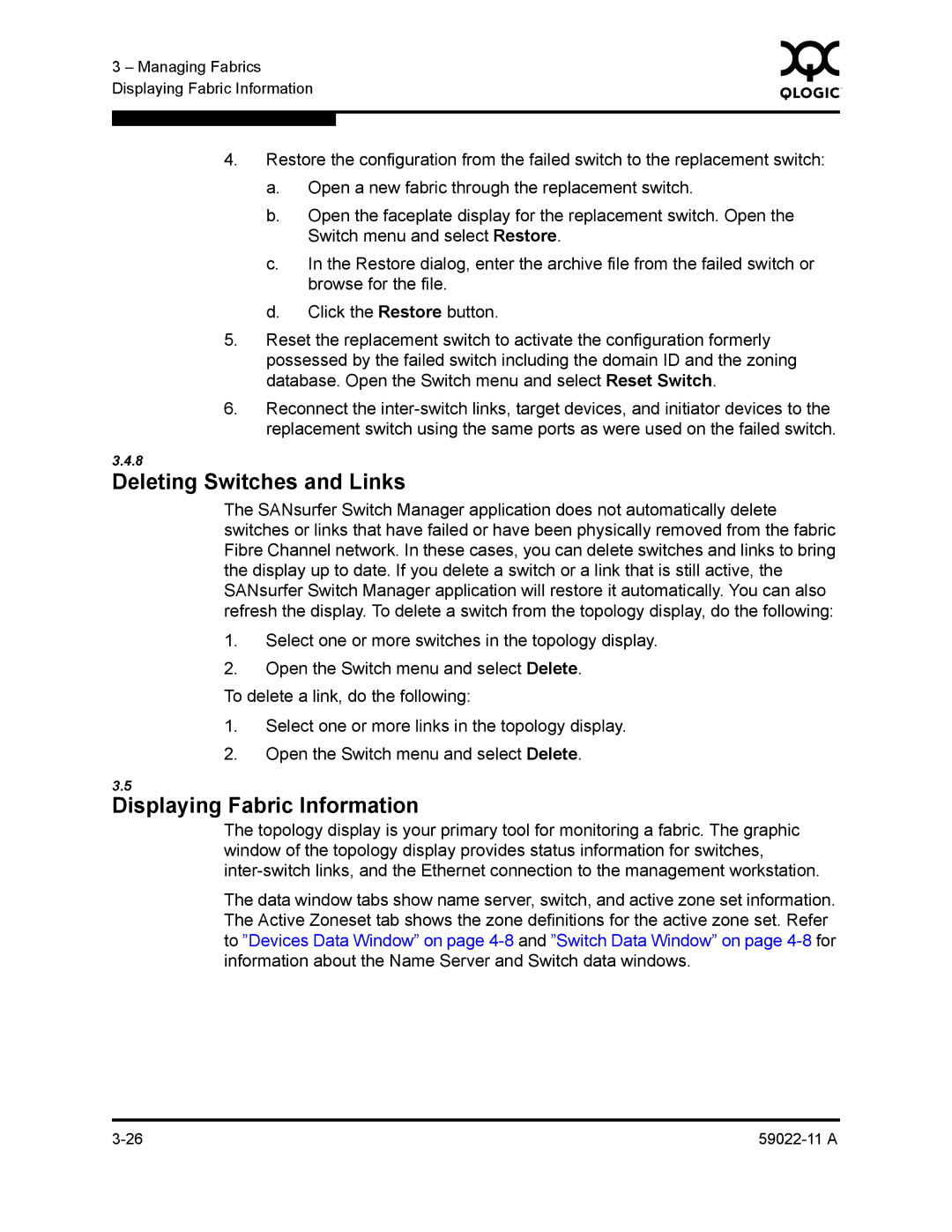3 – Managing Fabrics | 0 | |
|
| |
Displaying Fabric Information |
|
|
|
|
|
|
|
|
4.Restore the configuration from the failed switch to the replacement switch:
a.Open a new fabric through the replacement switch.
b.Open the faceplate display for the replacement switch. Open the Switch menu and select Restore.
c.In the Restore dialog, enter the archive file from the failed switch or browse for the file.
d.Click the Restore button.
5.Reset the replacement switch to activate the configuration formerly possessed by the failed switch including the domain ID and the zoning database. Open the Switch menu and select Reset Switch.
6.Reconnect the
3.4.8
Deleting Switches and Links
The SANsurfer Switch Manager application does not automatically delete switches or links that have failed or have been physically removed from the fabric Fibre Channel network. In these cases, you can delete switches and links to bring the display up to date. If you delete a switch or a link that is still active, the SANsurfer Switch Manager application will restore it automatically. You can also refresh the display. To delete a switch from the topology display, do the following:
1.Select one or more switches in the topology display.
2.Open the Switch menu and select Delete.
To delete a link, do the following:
1.Select one or more links in the topology display.
2.Open the Switch menu and select Delete.
3.5
Displaying Fabric Information
The topology display is your primary tool for monitoring a fabric. The graphic window of the topology display provides status information for switches,
The data window tabs show name server, switch, and active zone set information. The Active Zoneset tab shows the zone definitions for the active zone set. Refer to ”Devices Data Window” on page
